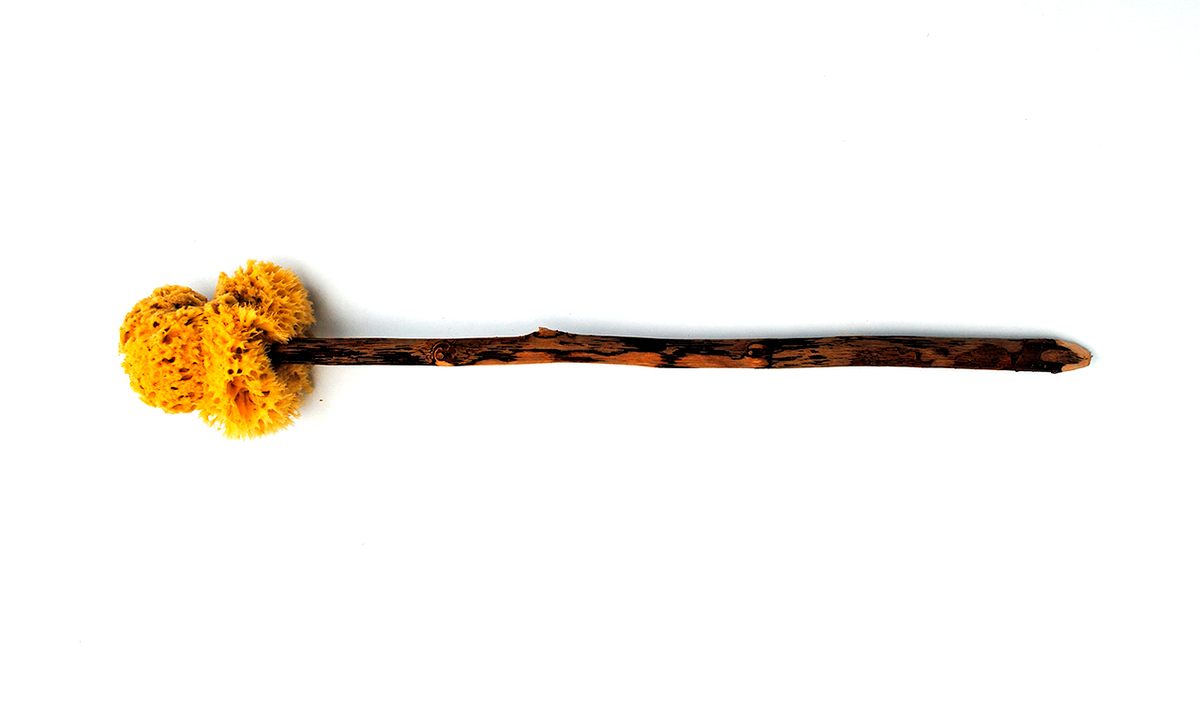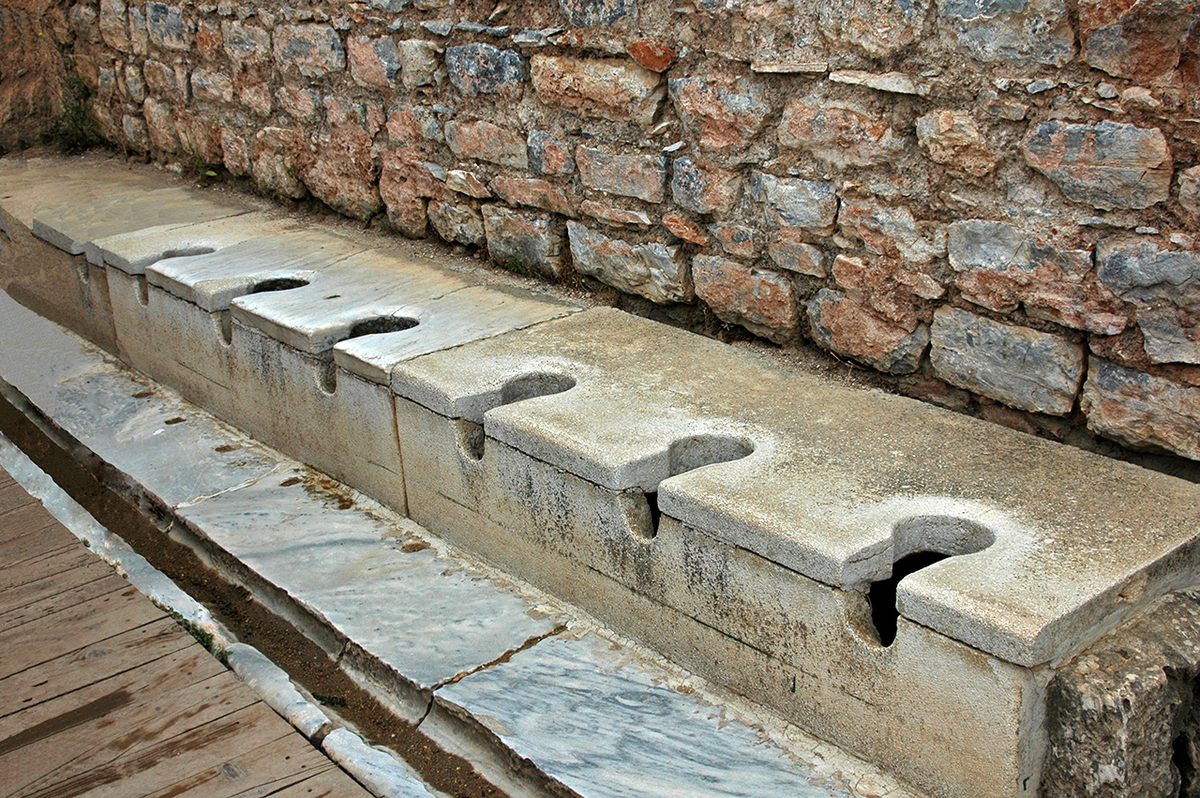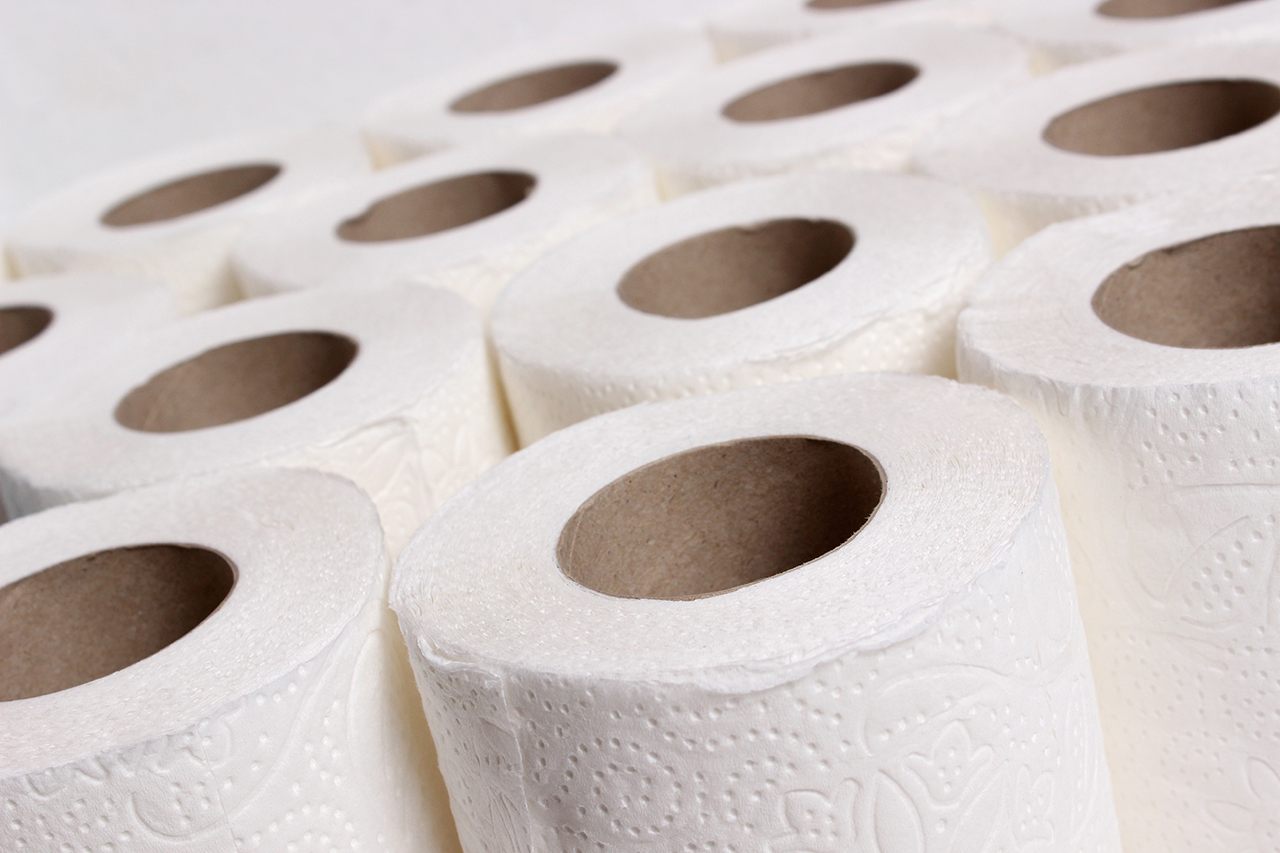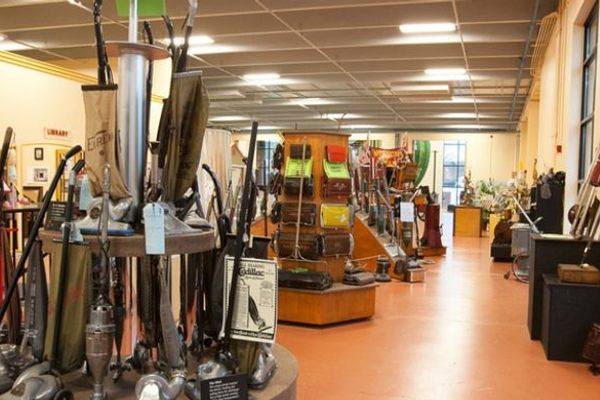A Brief History of TP, From Silk Road Hygiene to Pandemic Hoarding
An author’s end-game expertise has never been more timely.
In the late 1990s, at a former Han Dynasty military base in China called Xuanquanzhi, archaeologists excavated wall inscriptions and writings on silk that had been buried underground for more than 2,000 years. But some of the artifacts on which ancient Silk Road travelers left their mark came not so much from their minds as from their rear ends. In a latrine used between 111 and 109 BC, researchers discovered a trove of bamboo “wipe sticks,” each wrapped at one end with a bit of cloth—the oldest bum fodder on record.
Around the same time that sticks were doing their hygienic duty along the Silk Road, the Chinese invented paper. Initially produced and sold as a luxury good, paper had a wiping prowess that wouldn’t be discovered by members of the Imperial Court for another 700 years. Several hundred more years would pass until toilet paper began to show up outside of China, replacing cheap local hygiene solutions like leaves and shells in an effort to soothe beleaguered bums.
Today the coronavirus pandemic has ushered in a new era of toilet-paper appreciation. In the past several months, shoppers from the U.S. to Australia have been hoarding rolls by the cartful, as if it were the only thing between civilization and total chaos. But while nobody anticipated the current hysteria over toilet paper, human comfort has been tied for thousands of years to the objects we use for personal hygiene.
For his 2017 book, Bum Fodder: An Absorbing History of Toilet Paper, Richard Smyth went deep into the bowels of toilet-paper history, beginning with TP’s invention in China sometime around the sixth century.
Atlas Obscura recently sat down with Smyth to talk about the types of bottom cleaners humans have used throughout history, why we should be thanking the Chinese for finding an alternative to “wipe sticks” (aka “shit sticks”), and whether coronavirus will have an impact on the way we wipe our bums.

Your book focuses on the Western history of toilet paper, but we know that it was actually first used in China around the sixth century. Before it made its way to Europe and then the Americas, what did people use to clean their bums?
Well, even when paper was first introduced as paper, it was a high-quality luxury product. It wasn’t something people had lying around as waste. And there is some record of it being used at the Chinese court as toilet paper. But this wasn’t something that ordinary people had.
So for many centuries people were getting on with business, so to speak, in their own improvised, ad hoc way. You have things that tend to reflect landscape and the habitats that people are living in. You have people in coastal areas using shells, which seems quite a robust way of dealing with the problem. Wool, obviously—sheep’s wool scraps. Leaves. Later on, in rural America, the corn cob—a dried corn on the cob with the corn taken off—was almost iconic. It had this quality that was so symbolic of Corn Belt America.
The “shit stick” was literally a flat wooden stake used for wiping in early Buddhist practice. Archaeologists have found bamboo shit sticks in latrines on the Silk Road in China that date back over 2,000 years, and shit sticks from Nara, Japan from the eighth century. Besides the term, which made its way into the Oxford English Dictionary by the end of the 16th century, the shit stick never really caught on in the Western world.
I’m not an authority on the shit stick, so to speak, but as a general rule Asia has this whole parallel history [to the West that] is much more sensible. The main thing you use is water, because [your bum is] dirty and you need to get it clean. Meanwhile, the Western world is thinking, “Where can I get this expensive dry paper to wipe off this excrement?” It puts our practices into perspective.

In ancient Rome, the preferred bum fodder was the xylospongion. What was that exactly?
The xylospongion is a sponge on a stick. It was a purpose-built product. But the thing about that is that it was multiple use. So you would go into your Roman latrine, do your business, use the sponge on a stick, and then put it back. You would rinse it off in the waste bathwater and put it back in a jar of vinegar, ready for the next user.
Now how many uses you would expect a xylospongion to go through I’m not sure, but [definitely] more than one. Which is more than most modern users would be comfortable with.
The sponge part seems quite reasonable. But why did they need the stick?
Well, yes—that is the curious part. Weirdly, given that they were very [relaxed about] sharing bum fodder with each other, there’s also a degree of modesty in Roman latrines. So you don’t sit on an open latrine or urinal or anything like that. You sit on a closed box, essentially, that has a hole in the front. You do your business, then you insert the sponge on a stick through the hole. You do this kind of keyhole surgery procedure on your undercarriage, and then you replace it in the jar.
So, yeah—the stick is slightly mysterious, until you understand the mechanics of the Roman latrine.

Wiping with the neck of a goose was apparently considered a luxury at one time. There’s even a rumor that it was Elvis Presley’s preferred method.
Yes, there is. This is one of the great Elvis myths. It was Rabelais, the French Renaissance writer who wrote Gargantua and Pantagruel, which is this absolutely absurd epic work full of filth and gratuitous nonsense. And there’s a section where Gargantua, this giant child, tries to find the best thing to wipe your bottom on. He goes through a horrendous list of things—various forms of livestock, all kinds of fabric, various kinds of hats, all manner of different things—and he decides in the end that the best thing is the neck of a live goose. It’s the kind of thing that people remember and pass on when they read it, and eventually they forget that it was in Rabelais, and they think that it was in some historical source.
It was actually John Harrington, who was one of the inventors of the first toilet in England, who helped to further the rumor that it was an actual person at the French court who popularized [wiping with a] goose. It was very recently [that] Liam Gallagher, from the rock group Oasis, said he thought it was great that Elvis had a box full of goose necks in his toilet that he would wipe his bum on. Which, as far as I’m aware, is not true—absolutely not true. It just shows you what people will believe.
There’s an interesting subculture about what we believe people do in the toilet. This is one of the reasons this whole history is so interesting to me—because you have no idea how the people you know best in the world [act in the toilet]. There’s this whole secret world that everyone has to themselves.
And humans aren’t the only species that wipe their behinds, right?
Chimpanzees are our closest relatives in this regard. There have been studies where they use leaves, as you might imagine, to wipe feces. In many ways it’s just an extension of natural hygiene. I mean, all animals get rid of waste; even the smallest animals get rid of waste and avoid poisonous dirt.
We have taken this slightly ridiculous leap away from that because, back in the day, we were doing the same thing. We used leaves or whatever it was that we had lying around—wool or shell[s] or whatever.

In your book, you describe how printed materials like books and catalogs were commonly kept in latrines for bum fodder before toilet paper was available to the masses in the 19th and 20th centuries.
We used to use waste paper in the 19th century, and well into the 20th century. Everyone did. The idea of using special medicated paper [to wipe your bum] was a quack’s idea. This is the genius of toilet paper. It’s a quack remedy for hemorrhoids. [American inventor and early toilet-paper pioneer] Joseph Gayetty came up with the idea that printer’s ink causes hemorrhoids—which is rubbish—but it eventually caught on, and people stopped using printed paper.
By the early 20th century toilet paper was sold as a roll of perforated sheets. But advertising, purchasing, and even having it visible in the home was considered quite shameful. What creative ideas did people come up with to avoid having to talk about or look at toilet paper?
Well there’s all sorts. This whole idea is fascinating to me. I remember in suburban Britain in the [19]70s and ’80s—and I’m sure still in some places today—you get the lovely frilly toilet roll cover that lives in the bathroom. Used to be a dolly—a little plastic dolly with huge skirts that covered the shameful roll. Everybody knows what was under there, but you never look at it or speak of it.
There were other elaborate things. A ladies’ fan that unfolded to reveal folded sheets of toilet paper—a sort of James Bond gizmo. And even when you’re in a chemist’s or pharmacy buying toilet paper … one of the manufacturers produced a coupon in their advertising so that you could just take that into the shop and hand it furtively to the pharmacist, and you would never have to say the words “TP.” It would just say, “Give the bearer two rolls of Scott,” or whatever it was, and they would presumably slip it to you in a brown paper bag under the counter.
So it’s this fascinating idea of secrecy and shame, but it also goes hand in hand with a strange idea of refinement. Around the same time, the toilet roll was the thing that the refined lady had around the home—clearly because it was expensive. Once consumerism takes over, it becomes this desirable commodity, and people start showing off about it. So there’s this uneasy balance between “Oh, this is disgusting, let’s hide it” and “I paid a fortune for this, I want everyone to know I use quilted three-ply.”

In the last few months people have been really hoarding this stuff in response to the coronavirus panic. When did the purchase and the use of toilet paper go from being shameful to shameless?
Well, I think we’re still stuck in that slightly uneasy balance. I mean, obviously we buy it and we use it. But we still don’t like to think about it. Very recently there was a campaign in England, one of the big companies, and all they did in this advert was they had a few people … talking about whether they scrunched or folded toilet paper.
Again, this is one of those things—you don’t know about your nearest and dearest, whether they scrunch or fold. Some advertising guy had this idea to talk about it. I thought it was quite a good idea, but they got loads of complaints. People actually took the trouble to write in, phone in, email “This is disgusting! I’m watching television and I don’t want to be reminded of folding and scrunching.”
That was only like, what, five years ago? So we’re still in that situation where we spend fortunes on it, we buy this ludicrous high-end, multiple-ply whatever. And yet we’re still very embarrassed about what we actually do with it, which does make this panic buying quite interesting. People are lining up, very obviously filling their trolleys with loo roll. But you ask them what they’re gonna do with it, and they go all shy.

You think the golden age of toilet paper may now be coming to an end based on a variety of factors, one of which is environmental. Does what’s happening with the coronavirus right now change your prediction at all?
General despair might change my prediction.
Ha ha.
I don’t know. I would hope that people start to realize we’re cutting down mature forests to make paper that we’re gonna wipe shit on. Is this sustainable? And you’d hope it would be one of those industries that would feel pressure in that direction.
But another problem is that people don’t want to talk about it. And when people don’t want to talk about it, it’s quite difficult to effect change. It’s heroic work—particularly in the developing world, where people have to be genuinely brave to speak out [on issues of personal hygiene and waste]. This whole toilet business needs a revolution. But that’s a tough revolution to lead.
This interview has been condensed for length and clarity.
You can join the conversation about this and other stories in the Atlas Obscura Community Forums.



















Follow us on Twitter to get the latest on the world's hidden wonders.
Like us on Facebook to get the latest on the world's hidden wonders.
Follow us on Twitter Like us on Facebook